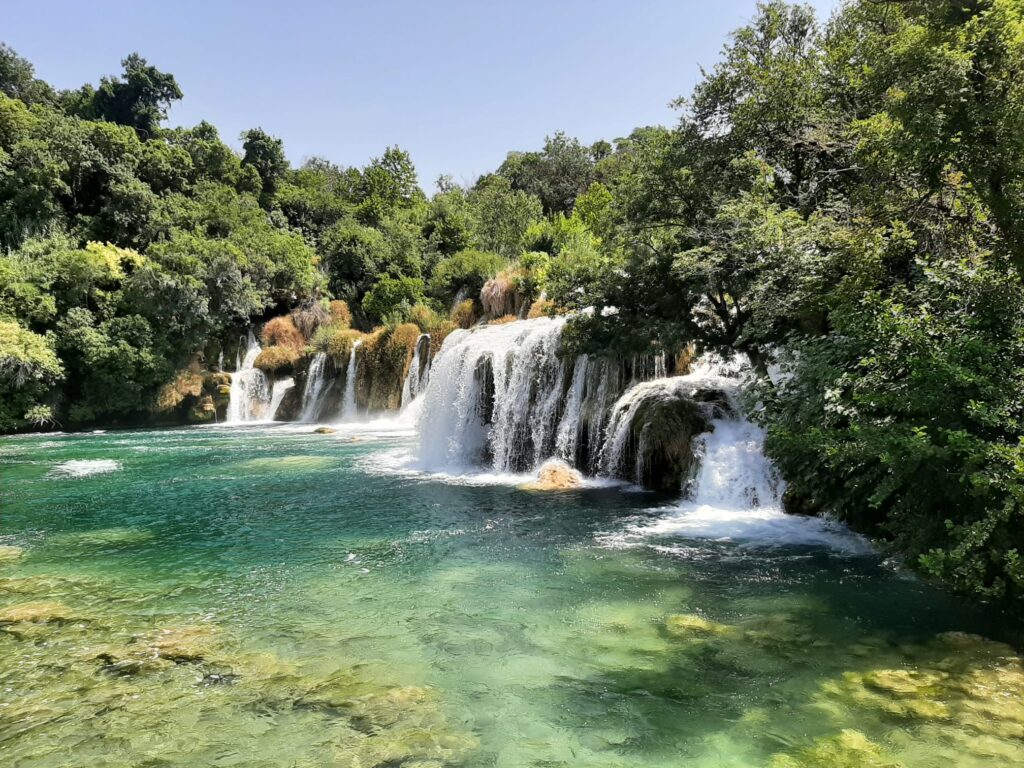The second stop on our Croatian summer holiday was the waterfalls of Krka National Park. The waterfalls in the Krka River gorge are unique for their beauty and frequency. Both of these characteristics are attributable to the surrounding karst topography of water-soluble limestone. As rainwater percolates through the porous geology it erodes the rock, which is high in calcium. Farther downstream the calcium precipitates out of the water during the agitation process of splashing, thus building up a travertine rock wall behind which a natural reservoir forms. Water eventually trickles over, creating a beautiful cascade. In essence, the rock is eroded over time high in the watershed, and deposited lower down within the stream course. The Krka River was protected as a national park in 1985.
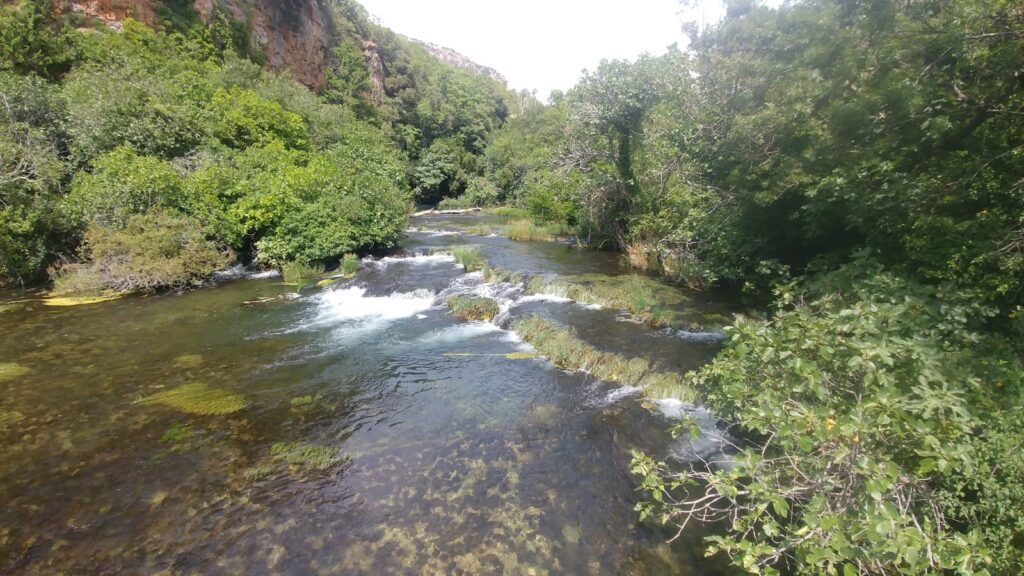
The most popular spot in Krka National Park is Skradinski Buk, a group of gorgeous waterfalls at the southern end of the park. Wanting to avoid the possible crowds, I found a recently renovated rustic rural cottage (including a small pool) on the Oklaj plateau for three nights near the northern end of the park, where there are also nice waterfalls but maybe fewer people. Our host welcomed us with yummy warm fritters, freshly made by his mother, and a homemade cherry aperitif. The tiny villages on the plateau have groups of stone buildings in various stages of use and decay. In the oppressive summer heat it is a fascinatingly perplexing place.
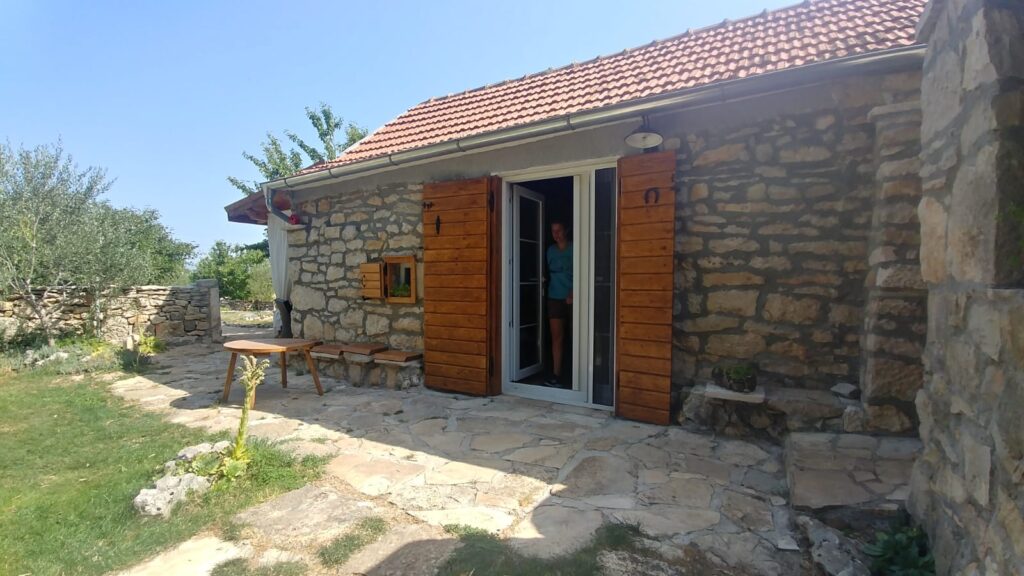
On our first morning we drove to Roški Slap, a group of waterfalls partway up the park and at the bottom of a deep river gorge. We walked the 1.3-kilometer boardwalk that traversed through the small cascades and extensive array of beautifully clear pools. There were few people on the boardwalk and so many fish in the cold pristine water. We climbed 517 steps in 39°C heat to a prehistoric cave that offered a small amount of thermal relief, before climbing back down again. We jumped on the slow tour boat that took us upstream through the fantastic gorge to Krka Monastery, with a blue orthodox church and 20 students aspiring to be priests. Later in the afternoon and just below Roški Slap, we found a small swimming area, a couple of restaurants, and where all the people coming to this part of the park congregate on a hot day. The water was thankfully refreshing!
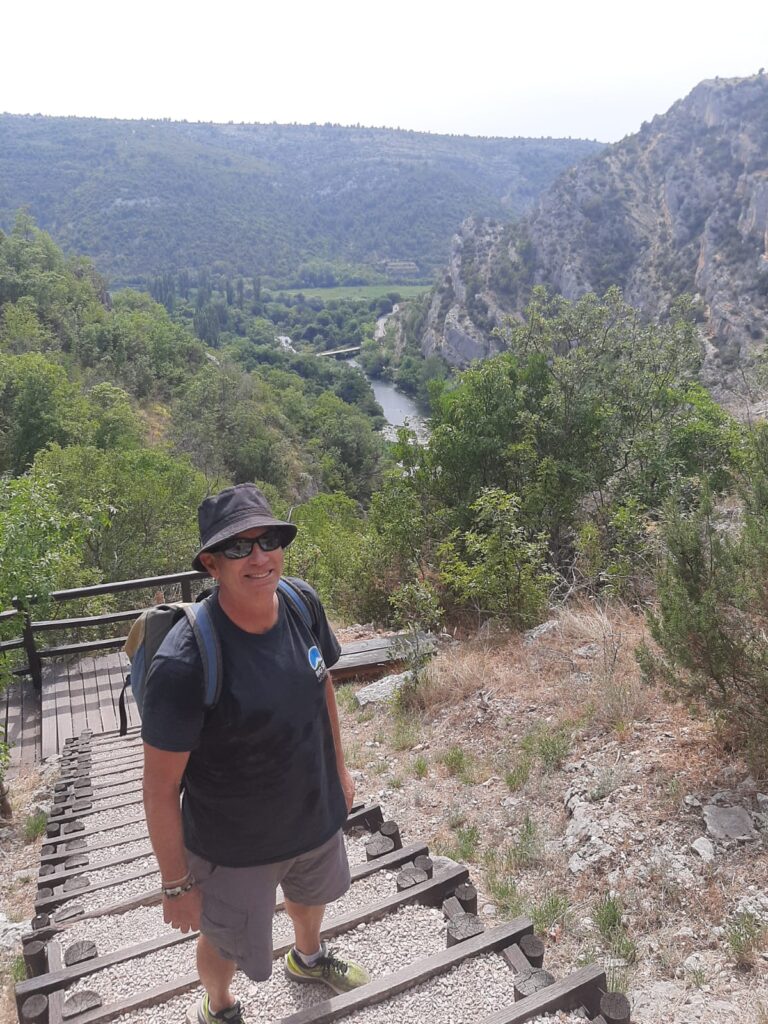
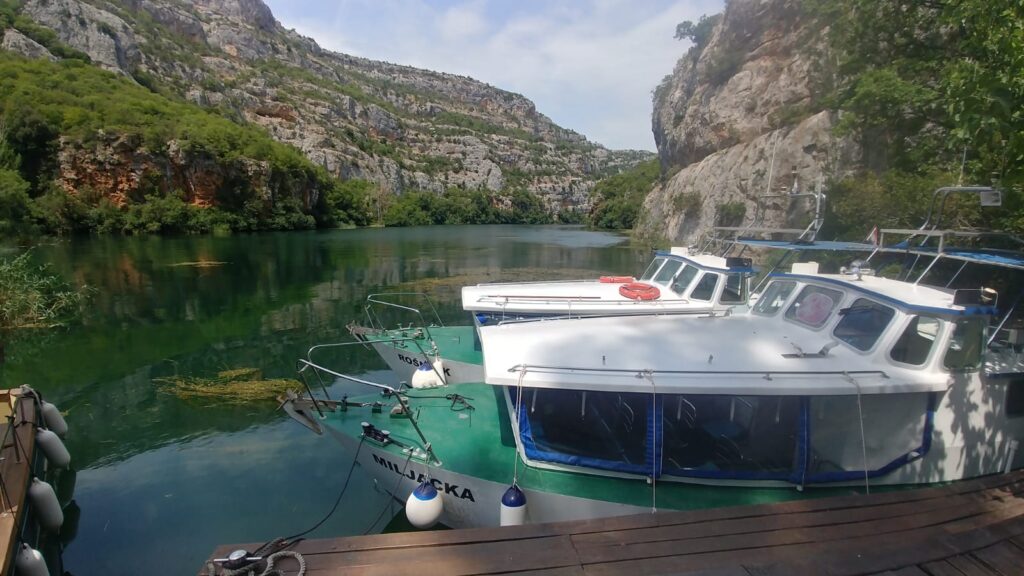
The next day, after a late start, we drove a short distance to the northern end of the park in search of more waterfalls and still fewer people. Following signs down a dusty rural road we came to a trailhead with a couple of parked cars. We traded the car for our hiking boots and walking sticks and descended into the gorge to find Bilušića Buk, a gushing waterfall with nearby ruins of an old mill. The temperature by the pool below the falls was 20°C cooler than on the plateau. The four other people at the falls left soon after we arrived, and we had the place to ourselves for about an hour before the next people showed up. It was quite fantastic. Later, on Google Earth, I determined that this waterfall is less than two kilometers from our cottage.
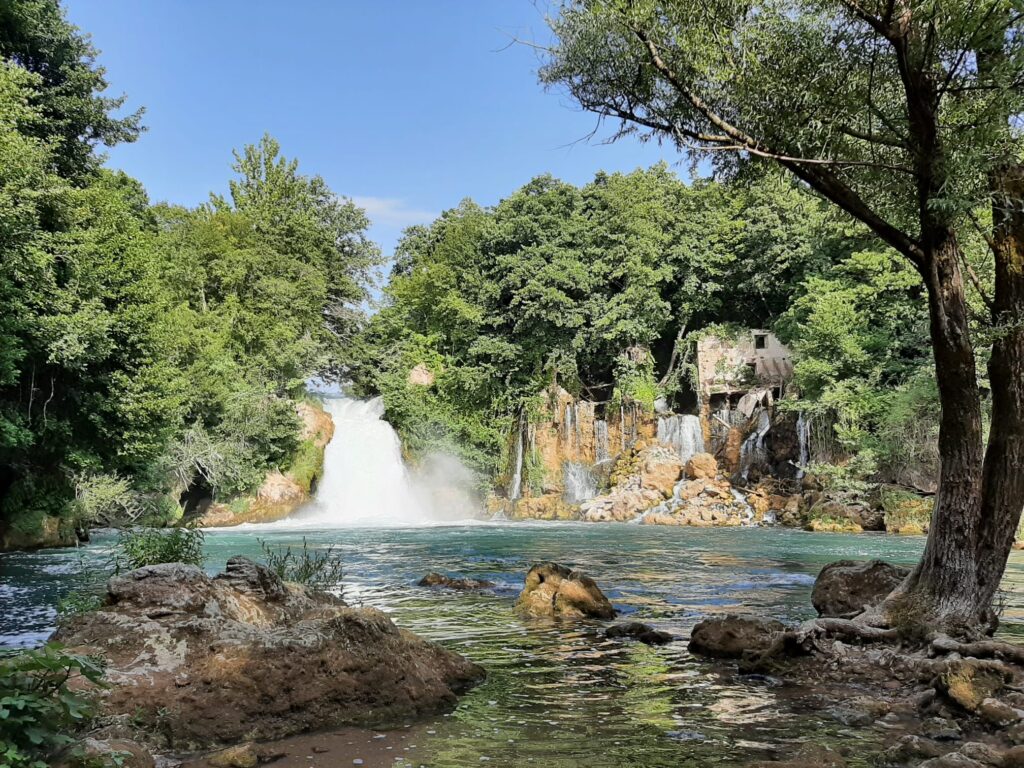
On the third morning we packed our stuff from the cottage and headed for Skradinski Buk, mentally preparing ourselves for the potential crowds. Being the easiest of the waterfalls to access from major highways, and the most scenic, Skradinski Buk is under enough visitor pressure that swimming was prohibited here in early 2020. Though our worries of lots of people were well found, the beauty of the place made it all worthwhile. Again, there is a boardwalk that snakes through impossibly clear pools, thousands of fish seemingly suspended in mid-air, and lovely trickling waterfalls. The trail climaxes just below the largest falls, which are postcard perfect. Social distancing is generally pretty easy with one-way pedestrian traffic throughout the trail.
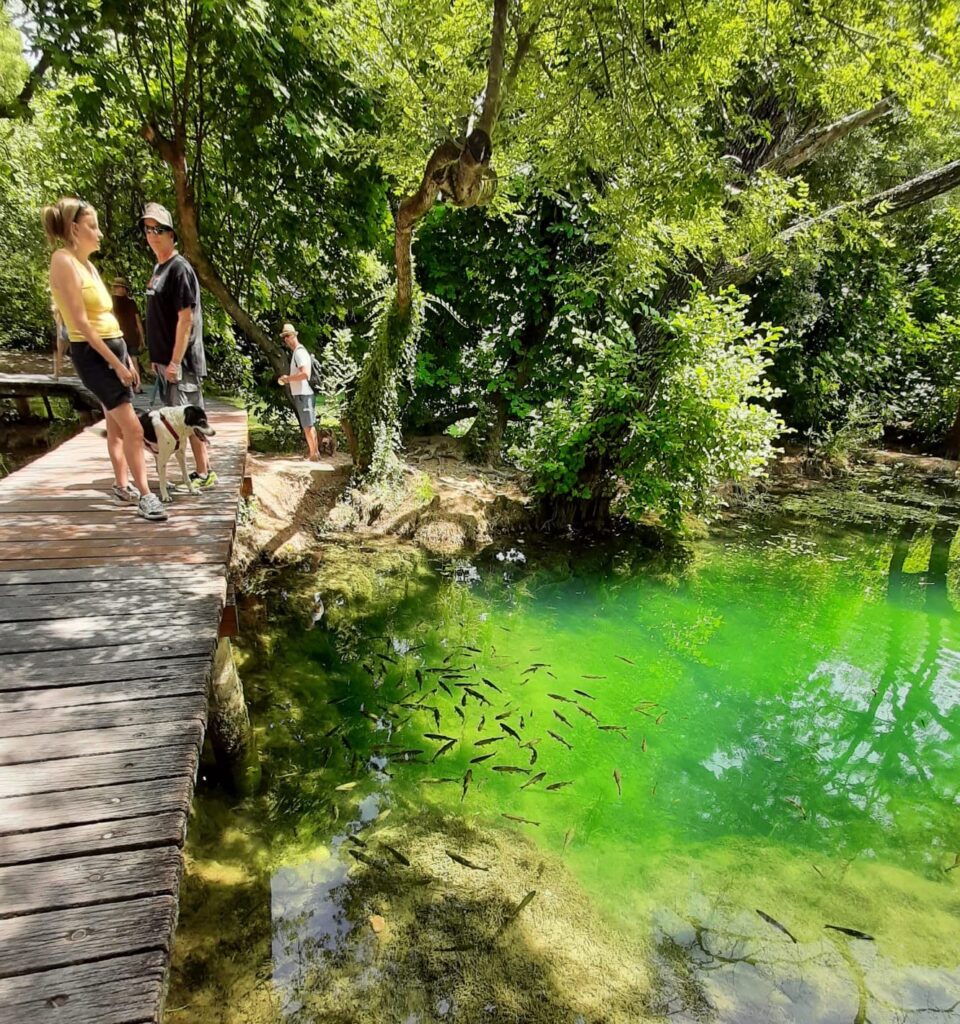
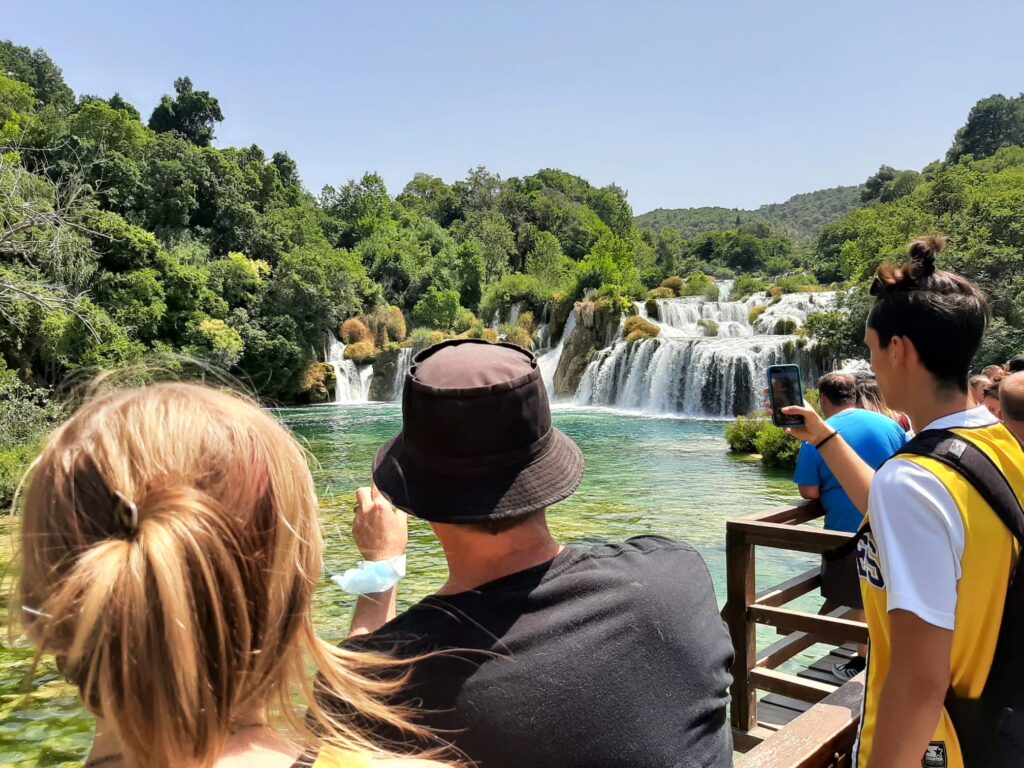
The third stop of our short Croatian tour is the subject of my next blog entry.

